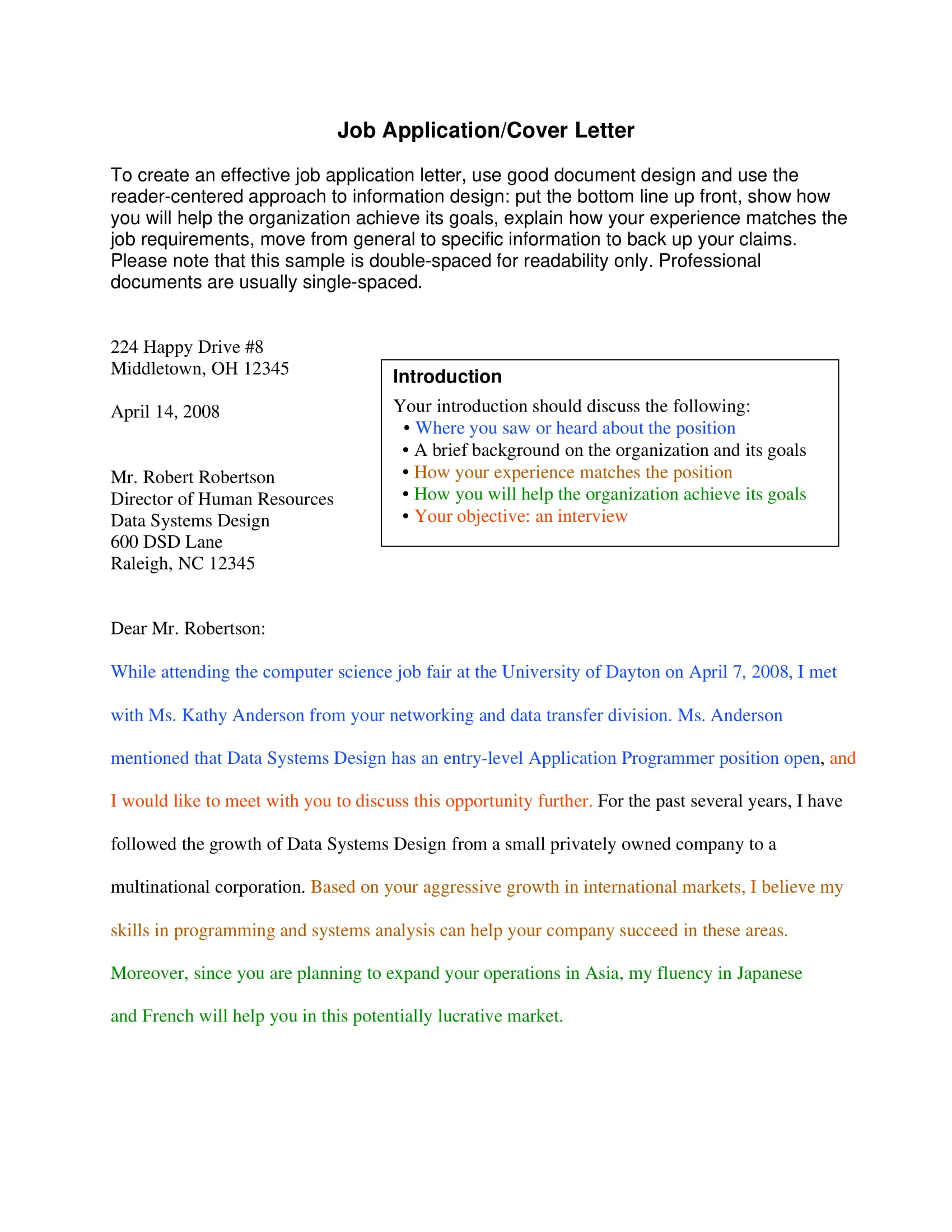Why Cover Letters Still Matter
In the digital age, with online applications and resume submissions being the norm, some might question the relevance of a cover letter. However, a well-crafted cover letter remains a powerful tool in a job seeker’s arsenal. It provides a crucial opportunity to go beyond the bullet points of your resume and tell a compelling story about why you are the ideal candidate. While a resume lists your skills and experiences, a cover letter allows you to demonstrate your personality, writing ability, and genuine interest in the specific role and company. It is a chance to connect with the hiring manager on a more personal level, showcasing your communication skills and providing context to your qualifications. In a competitive job market, a strong cover letter can set you apart, showing you’ve taken the extra time to tailor your application and truly want the job. Furthermore, it can highlight achievements or address gaps in your resume, giving you a more complete profile in the eyes of the recruiter.
Cover Letter Examples for Different Job Types
The key to a successful cover letter is tailoring it to the specific job and industry. A generic cover letter is unlikely to impress. This section provides examples tailored to different job types, showcasing how to adapt your approach based on the role’s requirements and your experience level. These examples highlight specific skills, achievements, and motivations, demonstrating a genuine understanding of the job and the company’s needs. Adapting your cover letter not only increases the chances of getting noticed but also shows your commitment to detail and your desire to align yourself with the company’s goals. Each example below provides a basic structure that can be modified to fit your circumstances and the requirements of the particular job.
Entry-Level Cover Letter Example

For entry-level positions, the focus should be on transferable skills, educational background, and any relevant internships or volunteer experience. Since experience may be limited, emphasize your enthusiasm, willingness to learn, and the ability to quickly adapt and contribute. Mention specific projects, coursework, or extracurricular activities that demonstrate skills relevant to the job description. The goal is to show how your academic and personal background can prepare you for success in the role, even without extensive professional experience. Entry-level candidates should also highlight any soft skills, such as communication, teamwork, and problem-solving, which can contribute to a positive team environment. This cover letter emphasizes the candidate’s potential and eagerness to take on new challenges. Finally, demonstrate that you understand the company’s goals and culture, referencing any research you have done about their mission.
Cover Letter Example for Experienced Professionals
Experienced professionals can leverage their accomplishments and expertise to make a strong case. This cover letter emphasizes results, quantifying achievements whenever possible. Highlighting your contributions to previous employers and showcasing your ability to generate tangible outcomes is crucial. The focus is on your professional trajectory, your understanding of the industry, and your ability to lead and mentor. Moreover, it shows your deep understanding of the company’s needs and strategic goals. Always align your skills and experiences with the job description, providing concrete examples of how you have successfully handled similar responsibilities in the past. If applicable, mention any awards, recognition, or promotions received, which highlight your professional growth. Finally, express your commitment to excellence and your eagerness to contribute to the company’s future success.
Cover Letter Example for a Career Change
Transitioning to a new career path can be challenging, making a strong cover letter even more important. This cover letter should explain your motivation for the career change, highlighting transferable skills and relevant experiences from your previous roles. Emphasize any education, training, or certifications that prepare you for the new role, even if the previous roles were unrelated. Connect your previous experience to the new industry by highlighting relevant skills such as project management, problem-solving, or communication. Additionally, address any potential gaps in your qualifications transparently and show your willingness to learn and adapt. Focus on your transferable skills and showcase your passion for the new industry. You should be able to showcase how your unique perspective and background can bring a fresh approach to the job. Demonstrate your enthusiasm and a proactive attitude to make a compelling argument for your transition.
Key Elements of a Winning Cover Letter
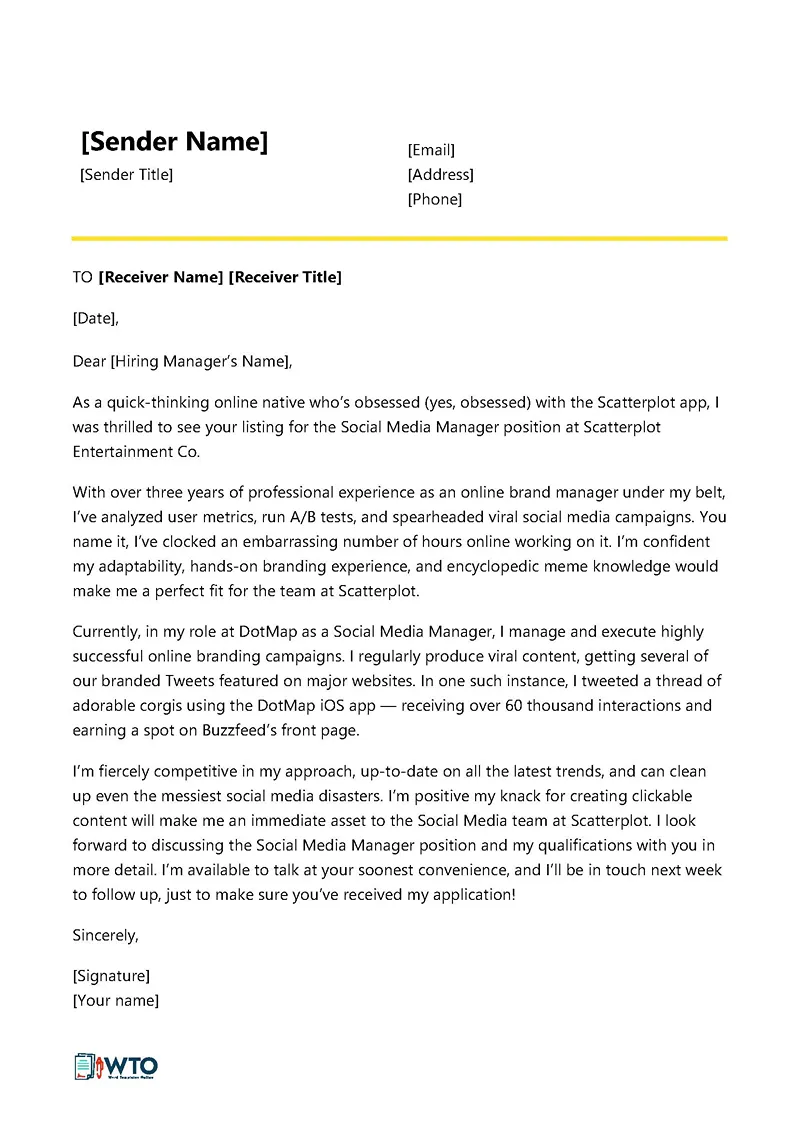
A successful cover letter is more than just a formality. It is a well-structured document that tells a story and highlights your value to a potential employer. Each element plays a crucial role in conveying professionalism, qualifications, and enthusiasm. A strong cover letter not only gets you noticed, but it also helps you stand out from the competition. Focusing on each element will help ensure you are making the best possible impression and significantly increasing your chances of getting an interview. The key elements include a professional header, a strong opening paragraph to grab attention, concise body paragraphs that highlight skills, and a compelling closing paragraph.
Header and Contact Information
Your header should include your name, contact information (phone number and email address), and the date. It should also include the hiring manager’s name and the company’s address if available. This ensures your contact information is easily accessible, and it demonstrates attention to detail. Use a professional font and a clean layout for the header, mirroring the style of your resume. Verify all information for accuracy, and ensure you use a professional-sounding email address. The header creates a professional first impression and sets the tone for the rest of the letter. A well-organized header shows that you are organized and detail-oriented, which are valuable skills for any job.
Professional Greeting
Address the hiring manager by name whenever possible. If you cannot find the name, use a generic greeting such as ‘Dear Hiring Manager’. Avoid overly casual greetings, as they can come across as unprofessional. Researching the hiring manager’s name shows that you have taken the time to prepare your application. Addressing the hiring manager by name demonstrates your attention to detail and respect for their role. The greeting is the first interaction with the hiring manager, and a personalized approach can significantly improve your chances of making a positive impression. When available, find the hiring manager’s name on LinkedIn or the company website and ensure the spelling and title are correct.
Opening Paragraph — Grab Attention
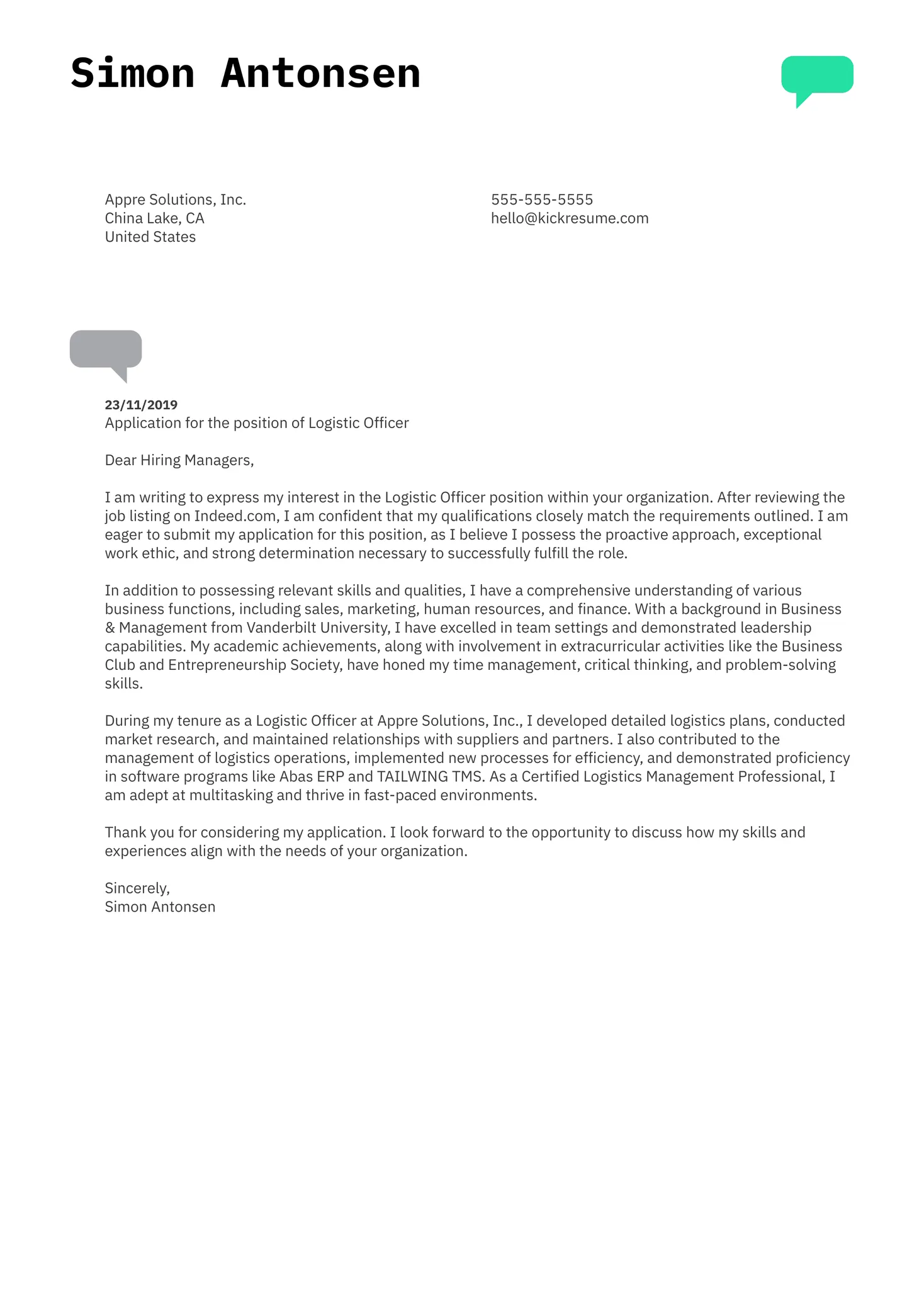
The opening paragraph is your first opportunity to capture the reader’s attention and make them want to continue reading. Start with a strong statement that immediately highlights your interest in the position and the company. Instead of a generic introduction, mention how you found the job, a specific aspect of the company that appeals to you, or a key skill that aligns with the job requirements. The opening paragraph should demonstrate your knowledge of the company and the role. This paragraph sets the tone for the rest of the letter and provides context for the skills and experiences you will discuss. By capturing the reader’s interest from the start, you can create a compelling case for your candidacy, making the hiring manager eager to learn more about your qualifications.
Body Paragraphs — Highlight Skills
The body paragraphs are where you delve into your qualifications and experiences. Use this section to highlight skills and achievements that align with the job description. Structure your paragraphs to emphasize specific skills using the STAR method (Situation, Task, Action, Result). Providing context about how you applied a specific skill, what actions you took, and the results you achieved will enhance your narrative. Use this section to give concrete examples that support your claims. Quantify your achievements and use action verbs to describe your actions. Avoid repeating information from your resume; instead, elaborate on the experiences and demonstrate how your skills can contribute to the role’s success. By doing so, you are proving to the hiring manager that you are a good fit and that you are the right person to take on the job.
Quantify Achievements
Quantifying your achievements makes your cover letter more impactful and demonstrates the value you can bring to the company. Whenever possible, use numbers and data to illustrate your accomplishments. Instead of saying, ‘Increased sales,’ specify by how much, for example, ‘Increased sales by 20% in one quarter’. Include specific figures that prove the impact of your actions in previous roles. This provides a more concrete picture of your capabilities. Quantifiable examples show your ability to deliver results and drive measurable success. Use percentages, dollar amounts, or specific metrics to showcase your achievements and contributions. They provide credible evidence of your accomplishments. This section will help to prove your value to a potential employer.
Closing Paragraph — Call to Action
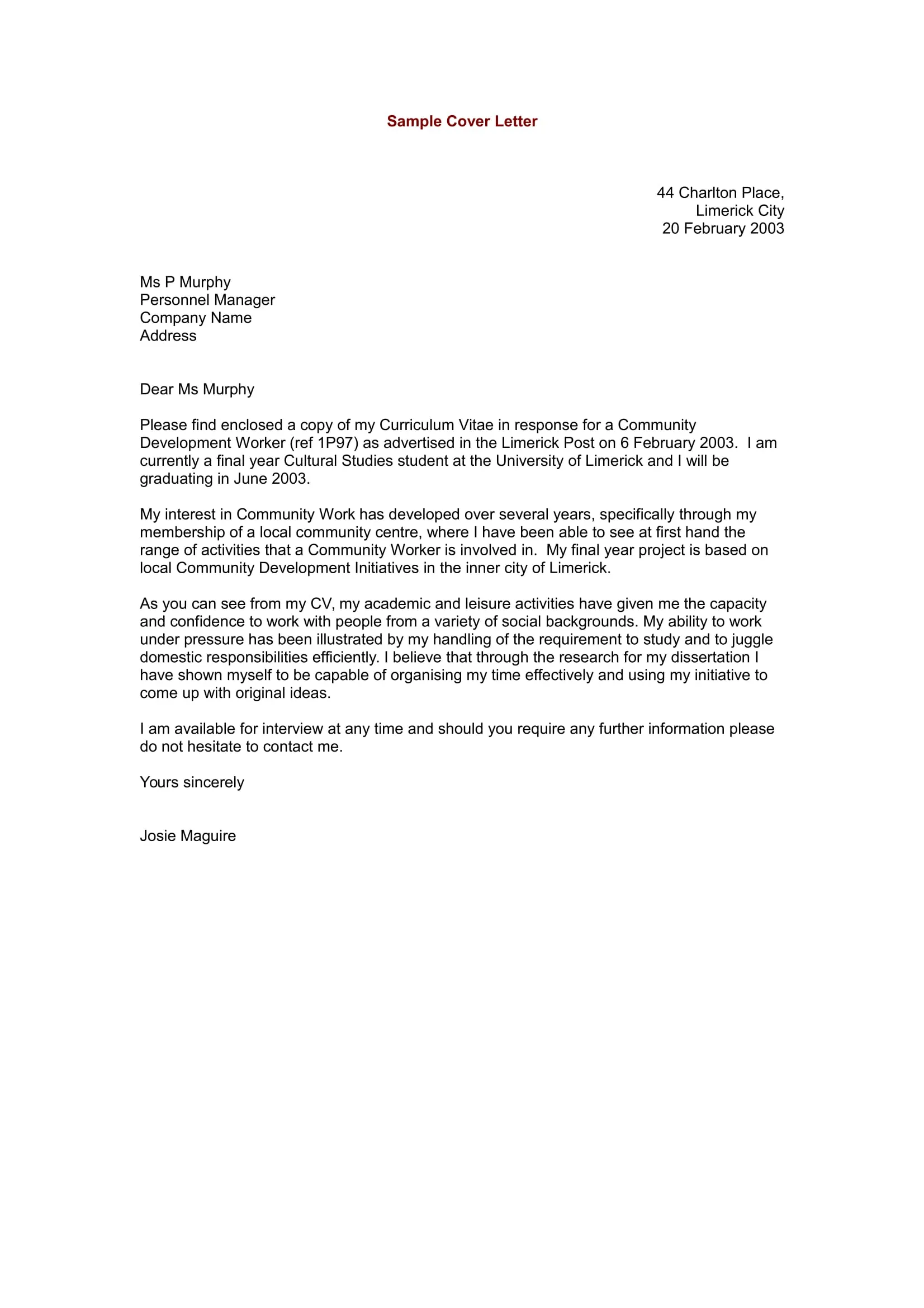
Conclude your cover letter with a strong call to action, expressing your interest in an interview. Reiterate your enthusiasm for the role and the company. Make it easy for the hiring manager to take the next step by including your contact information, if you have not already. Close with a professional sign-off, such as ‘Sincerely’ or ‘Best regards.’ Thank the hiring manager for their time and consideration. This final paragraph solidifies your interest and encourages the hiring manager to take the next step in the recruitment process. Make sure to proofread this section carefully to avoid any errors that might undermine your message.
Proofreading and Formatting
Proofreading and formatting are crucial for making a positive impression. Thoroughly proofread your cover letter for any typos, grammatical errors, or inconsistencies. Ensure your writing is clear, concise, and easy to read. Use a professional font and maintain consistent formatting throughout the document. A well-formatted cover letter shows that you pay attention to detail and take your application seriously. Proofread your cover letter multiple times, and consider having a friend or colleague review it for a second opinion. A polished cover letter is essential for demonstrating professionalism and creating a positive first impression. Furthermore, it should reflect the overall organization and attention to detail.
Common Cover Letter Mistakes to Avoid
Several common mistakes can undermine the effectiveness of a cover letter and damage your chances of getting an interview. Avoiding these pitfalls is essential for making a strong impression. Common errors include using generic language, failing to tailor the letter to the specific job, and making typos and grammatical errors. Being aware of these mistakes and taking steps to avoid them can significantly increase your chances of success. Proofreading, tailoring your content, and carefully planning the content of your application are vital steps to securing an interview. Focusing on these elements will ensure your cover letter is as strong as possible and that it effectively highlights your qualifications.
Generic Language
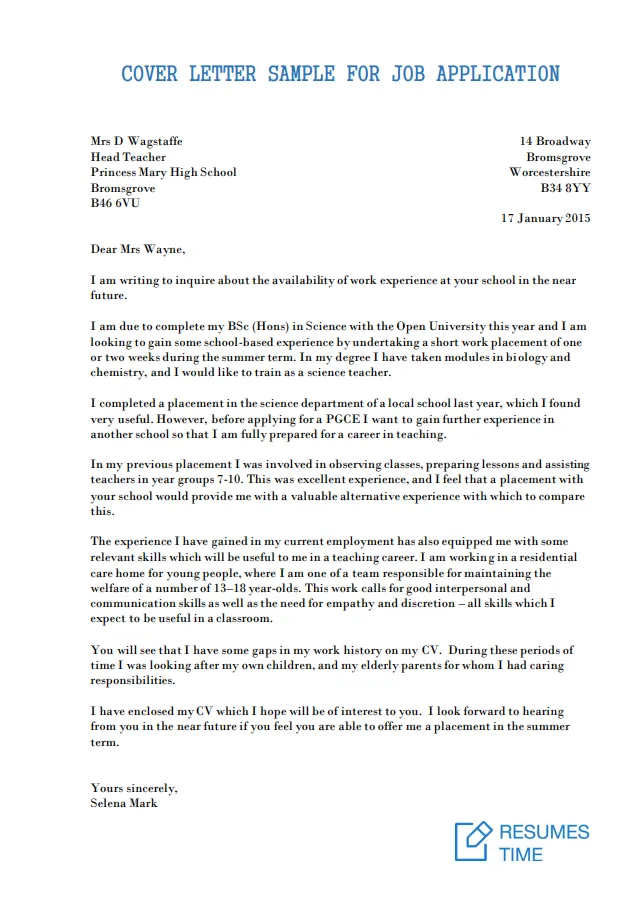
Using generic, cookie-cutter language is a surefire way to make your cover letter forgettable. Avoid using phrases like ‘I am writing to express my interest…’ or ‘I am a hard-working individual.’ Instead, be specific about why you are interested in the job and company, and provide examples of your skills and accomplishments. A personalized approach, which avoids generic statements, helps you stand out and shows you have researched the company and the role. Tailor your letter to the specific job requirements and company values. Demonstrate your knowledge of the company, and explain what motivates you to apply. It also shows you are serious about the opportunity and genuinely want to contribute to their mission.
Typos and Grammatical Errors
Typos and grammatical errors can immediately undermine your credibility and make you appear unprofessional. Always proofread your cover letter multiple times and use spell-check and grammar-check tools. Pay close attention to detail and have a friend or colleague review your letter. Even minor errors can create a negative impression. Ensure that your writing is clear and easy to read. A polished cover letter demonstrates your attention to detail and respect for the hiring manager’s time. A mistake-free cover letter will significantly increase your chances of making a positive first impression. Take the time to proofread your cover letter before submitting your application, because it helps to demonstrate that you care about the details.
Failing to Tailor the Letter
A generic cover letter shows you haven’t put in the effort to research the company or role. Tailor your cover letter to the specific job requirements and company culture. Highlight the skills and experiences that are most relevant to the position. Reference the company’s mission, values, and recent projects. The more tailored your cover letter is to the specific job, the more you’ll demonstrate your understanding of the company’s needs. Personalized cover letters are far more likely to impress hiring managers and get you an interview. Research the company and the specific role to ensure you understand the key requirements. By adapting to each role’s unique aspects, you show you are truly interested in that role.
Cover Letter Best Practices
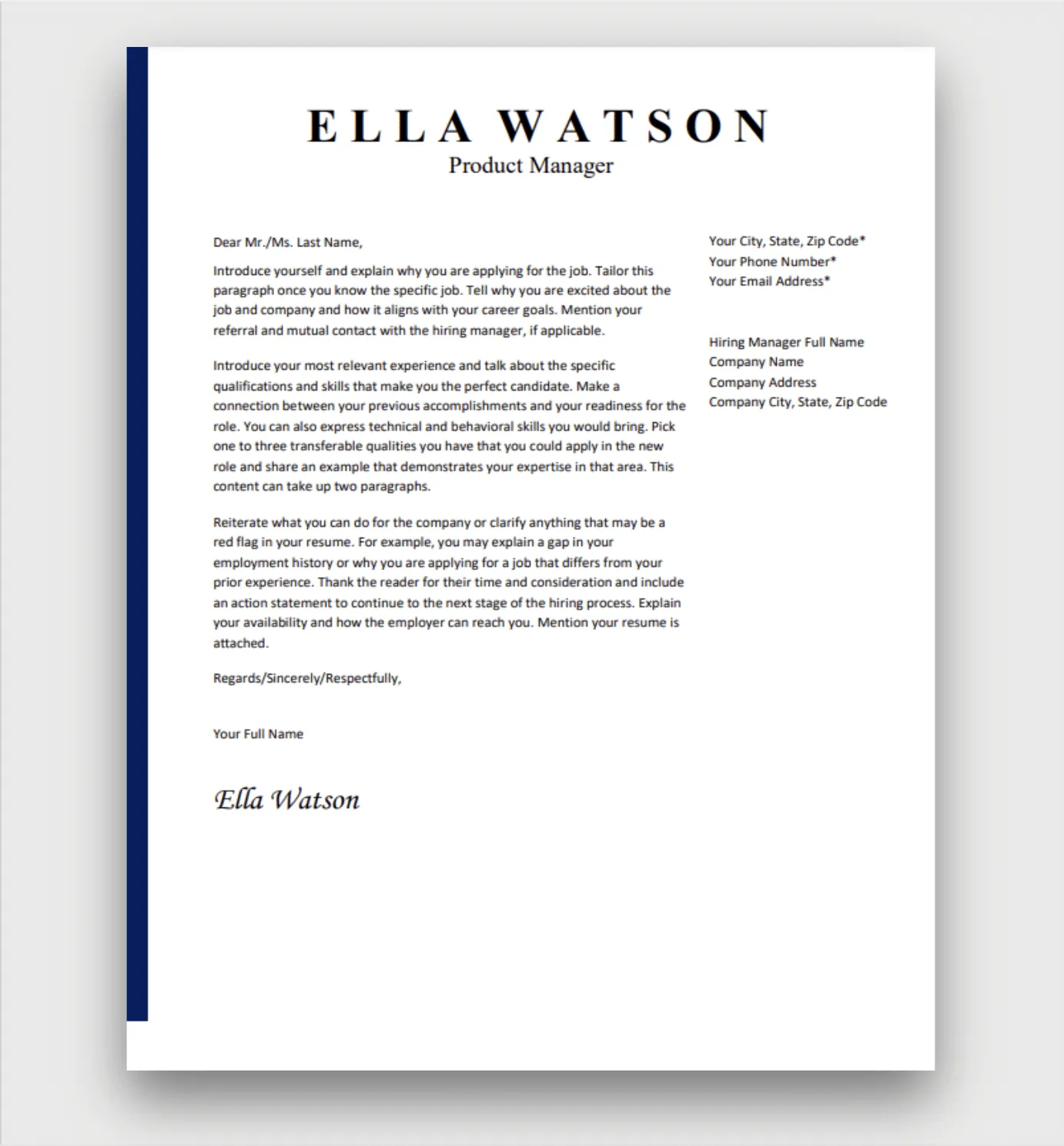
By following these best practices, you will be able to write an effective cover letter that highlights your strengths and increases your chances of landing an interview. Always take the time to research the company and the role. Tailor your cover letter to the specific job requirements, emphasizing relevant skills and experiences. Proofread your letter carefully to ensure it is free of errors and easy to read. A well-written cover letter can be the key to securing your dream job. You can highlight your abilities, demonstrate your interest, and show the hiring manager that you are a good fit for the role. Apply these practices to get noticed and make a lasting impression on potential employers.
